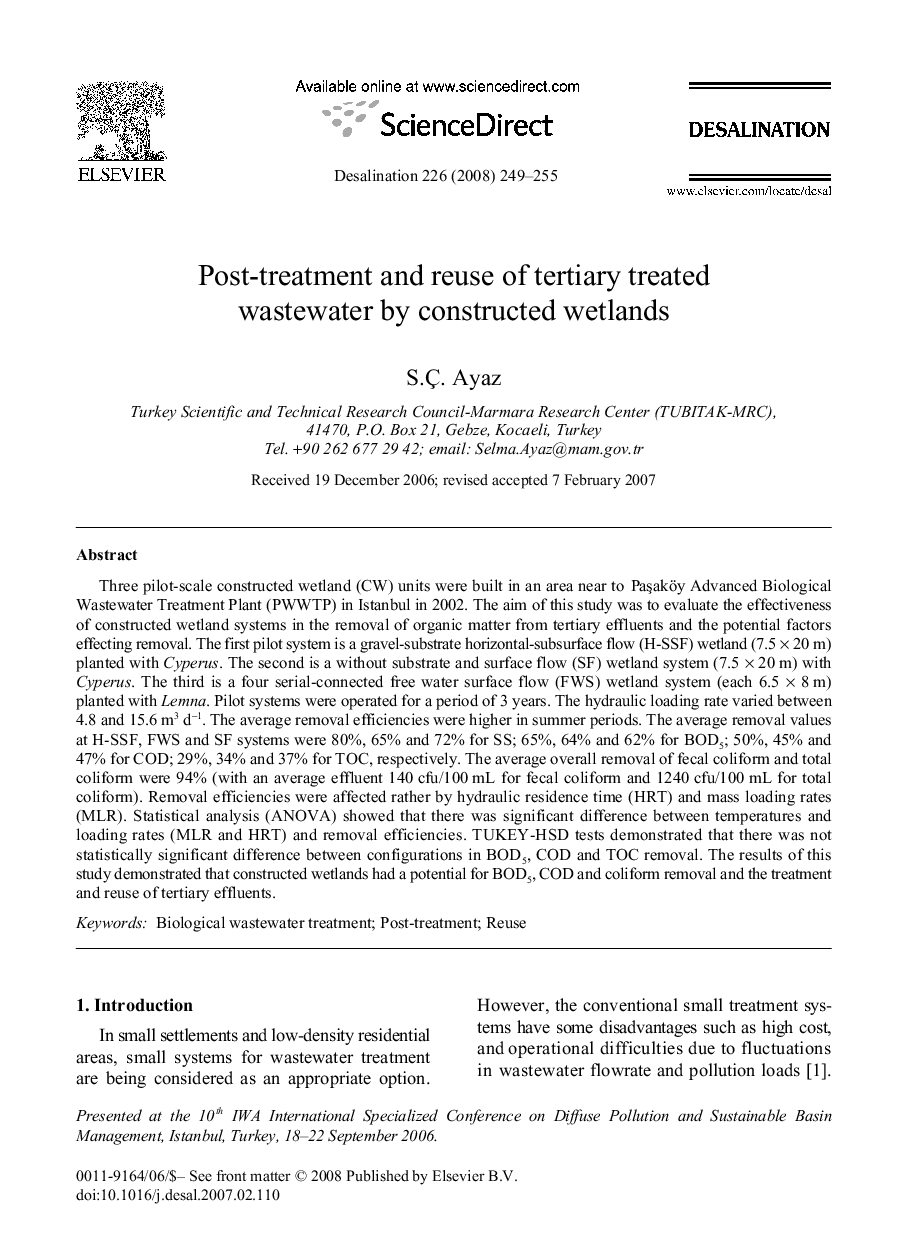| Article ID | Journal | Published Year | Pages | File Type |
|---|---|---|---|---|
| 627708 | Desalination | 2008 | 7 Pages |
Abstract
Three pilot-scale constructed wetland (CW) units were built in an area near to PaÅaköy Advanced Biological Wastewater Treatment Plant (PWWTP) in Istanbul in 2002. The aim of this study was to evaluate the effectiveness of constructed wetland systems in the removal of organic matter from tertiary effluents and the potential factors effecting removal. The first pilot system is a gravel-substrate horizontal-subsurface flow (H-SSF) wetland (7.5 Ã 20 m) planted with Cyperus. The second is a without substrate and surface flow (SF) wetland system (7.5 Ã 20 m) with Cyperus. The third is a four serial-connected free water surface flow (FWS) wetland system (each 6.5 Ã 8 m) planted with Lemna. Pilot systems were operated for a period of 3 years. The hydraulic loading rate varied between 4.8 and 15.6 m3 dâ1. The average removal efficiencies were higher in summer periods. The average removal values at H-SSF, FWS and SF systems were 80%, 65% and 72% for SS; 65%, 64% and 62% for BOD5; 50%, 45% and 47% for COD; 29%, 34% and 37% for TOC, respectively. The average overall removal of fecal coliform and total coliform were 94% (with an average effluent 140 cfu/100 mL for fecal coliform and 1240 cfu/100 mL for total coliform). Removal efficiencies were affected rather by hydraulic residence time (HRT) and mass loading rates (MLR). Statistical analysis (ANOVA) showed that there was significant difference between temperatures and loading rates (MLR and HRT) and removal efficiencies. TUKEY-HSD tests demonstrated that there was not statistically significant difference between configurations in BOD5, COD and TOC removal. The results of this study demonstrated that constructed wetlands had a potential for BOD5, COD and coliform removal and the treatment and reuse of tertiary effluents.
Related Topics
Physical Sciences and Engineering
Chemical Engineering
Filtration and Separation
Authors
S.Ã. Ayaz,
